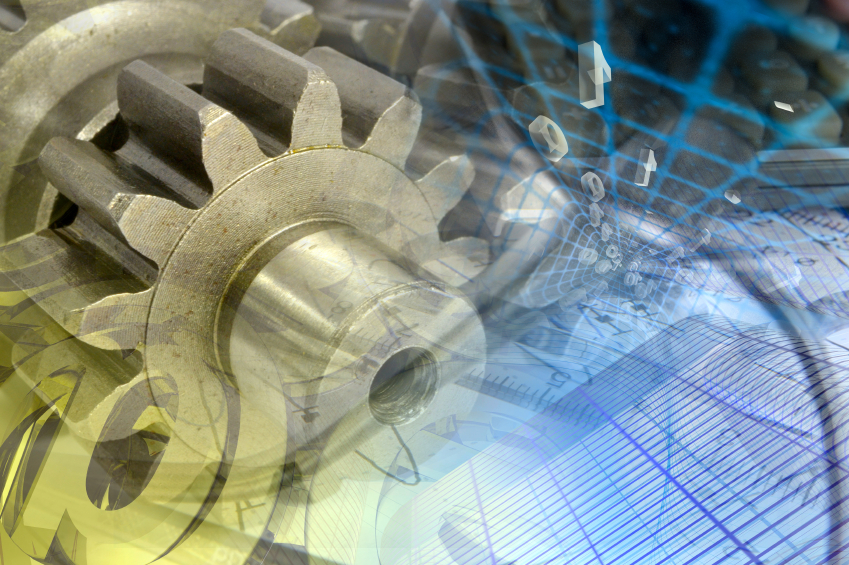 As a pillar of the U.S. economy, the manufacturing industry is an important driver of economic growth, innovation, and the creation of high-paying jobs. In recognition of the vital role that manufacturing companies play, legislators have created a number of tax incentives over the years designed to spur growth in the industry. Unfortunately, these incentives are often overlooked by manufacturing companies, particularly those that are small or medium in size, based upon a lack of awareness or the mistaken assumption that they do not qualify.
As a pillar of the U.S. economy, the manufacturing industry is an important driver of economic growth, innovation, and the creation of high-paying jobs. In recognition of the vital role that manufacturing companies play, legislators have created a number of tax incentives over the years designed to spur growth in the industry. Unfortunately, these incentives are often overlooked by manufacturing companies, particularly those that are small or medium in size, based upon a lack of awareness or the mistaken assumption that they do not qualify.
Research and Experimentation (R&E) Tax Credit
Also known as the Research and Development (R&D) Tax Credit, this incentive has saved individual businesses hundreds of thousands of dollars each year since its inception in 1981. It is often underutilized by businesses that erroneously believe that the credit is reserved for companies that conduct laboratory testing or unearth groundbreaking discoveries. In reality, the R&E Credit is available to businesses of all sizes across a wide range of industries, including manufacturing. In order to constitute qualified research under the credit, an activity must meet four basic requirements:
- The purpose must be to create new or improve existing functionality of a business component. For manufacturing companies, this requirement may encompass various activities, such as improving facilities or equipment, including new materials or technology to increase sustainability, or redesigning procedures in order to comply with federal or state regulations.
- The taxpayer must seek to eliminate uncertainty about the activity, including the optimal method of achieving the desired goal.
- The activity must involve a systematic process of experimentation designed to evaluate one or more alternatives. Examples range from an informal trial and error process to computational analysis.
- The process of experimentation must be technological in nature and must fundamentally rely upon the physical or biological sciences, engineering, or computer science.
In order to enjoy the substantial tax savings permitted by the R&E Credit, businesses must be able to show meticulous documentation, including plans, diagrams, and timesheets of employees who worked on qualified research activities.
Section 179D was added to the tax code under the Energy Policy Act of 2005 with the goal of incentivizing building owners to implement energy efficient upgrades in new and existing construction. The provision allows for a tax deduction of up to $1.80 per square foot, or $.60 per square foot for lighting, $.60 for HVAC systems, and $.60 for building envelope, when upgrades to those systems exceed ASHRAE Standard 90.1-2001 by at least 50 percent.
Based on the typically expansive size of manufacturing facilities, building owners may find that the §179D deduction results in significant tax savings, which offset the cost of energy efficient improvements. One of Capital Review Group’s clients was a large steel manufacturer with an 88,000 square foot warehouse. The warehouse was full of outdated hi-bay lighting fixtures with 400 watt lightbulbs that consumed excessive energy while generating an uncomfortable amount of heat. The building owner replaced these fixtures with bulbs that used only 234 watts. This change increased efficiency by about 40 percent, resulting in lower energy costs, a more comfortable environment within the building, improved sustainability for the community, and most significantly, a tax savings of $53,000 under §179D.
The §179D deduction, along with the R&E Credit, belong to a group of provisions collectively known as tax extenders. These provisions are not permanent parts of the tax code, but enjoy broad support and therefore are typically renewed each year. Most recently, they expired on December 31, 2014, but given their long history of being renewed retroactively after lapsing, taxpayers should continue to consider them in their tax-planning strategies for 2015.
Cost segregation is a strategy that allows a taxpayer to reap the benefits of additional depreciation deductions through reclassification of assets. Many firms believe they are taking all of the asset deductions, when in reality less than 10% are accurately and appropriately classifying assets, missing much of the available deductions under proper cost segregation analysis. Under the tax code, real property assets are depreciated over 39 years, while items of tangible personal property are depreciated over five or seven years. A cost segregation study identifies assets that were previously considered real property and reclassifies them as tangible personal property, resulting in accelerated depreciation deductions. These deductions may result in greater and more immediate tax savings for building owners.
Section 263(a) of the tax code includes the tangible property regulations, which apply to all taxpayers who have acquired, produced, or improved tangible property, such as buildings or equipment. The regulations permit taxpayers to expense items that were capitalized as improvements in prior years, enabling them to claim additional deductions and losses for assets with long useful lives.
Capital Review Group helped one client that owned a $2 million manufacturing facility. The building entered service in 2001, and the building owner opted to replace ten rooftop units (RTUs) at an original cost of $250,000. The RTUs will be depreciated over 39 years with an annual depreciation rate of $6410. With 25 years of depreciation remaining as of 2015, the client will harness $160,250 in depreciation deductions as a result of CRG’s Tangible Property Services™.
Capital Review Group offers the expertise needed to help manufacturing businesses capture the financial benefits of the tax incentives available to them. Contact CRG for more information.
(Sources: https://www.fas.org/sgp/crs/misc/R42742.pdf, http://www.aicpa.org/publications/taxadviser/2013/october/pages/clinic-story-01.aspx).